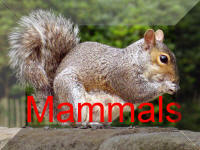Back To

Size
Wingspan to 13 1/2 " (34cm) Head and Body 2 1/2 " ( 6.5cm) Average weight 13-34 g.
Description
Dorsal fur is buff with darker tips. Adults that are older may be darker and reddish, females may be chestnut-brown. Ventral fur is paler and grey or yellowish-white. Juveniles are greyish in colour with the ventral fur being slightly paler. Fur is fluffy.
This bat easily identified by a horseshoe-shaped flap of skin surrounding the nostrils.
Size is the distinguishig factor from the similar lesser horseshoe bat . The forearm of the greater horseshoe bat is longer than 45mm.Habitat
Found in areas of mixed deciduous woodland and grazing pastures on steep south-facing slopes.Diet
Diet of greater horseshoe bats mainly consists of Lepidoptera (Moths ) and Beetles ( Coleoptera) but other Insects and waps supplement it depending on seasonal availablility. Hunts in open tree habitats such as pasture, parkland and hillsides, often by water. Drinks while hovering or during low-level flight.
Greater horseshoe bats forage using perch-hunting, hawking and gleaning strategies.
Winter foraging depends on the weather and prey availability.
ConservationThis Bat is listed in the UK Biodiversity Action Plan as one of the rarest mammal species in the UK . The main threats facing greater horseshoe bats are the loss of roost sites and foraging areas
Breeding
Mate from autumn to spring but primarily in late September or October. One young is born between mid-June to the end of July, occasionally in August.
Horse Shoe Bats can live up to s 30 years and have the longest recorded age of any European bat.
